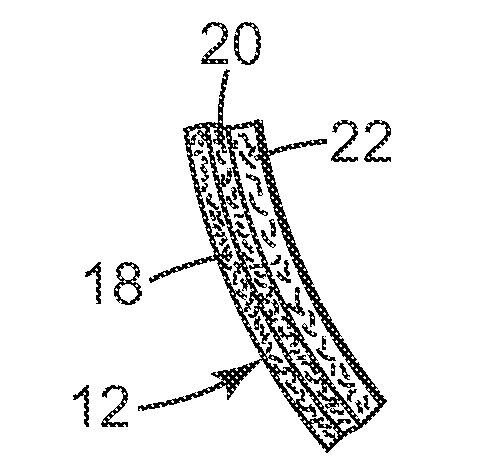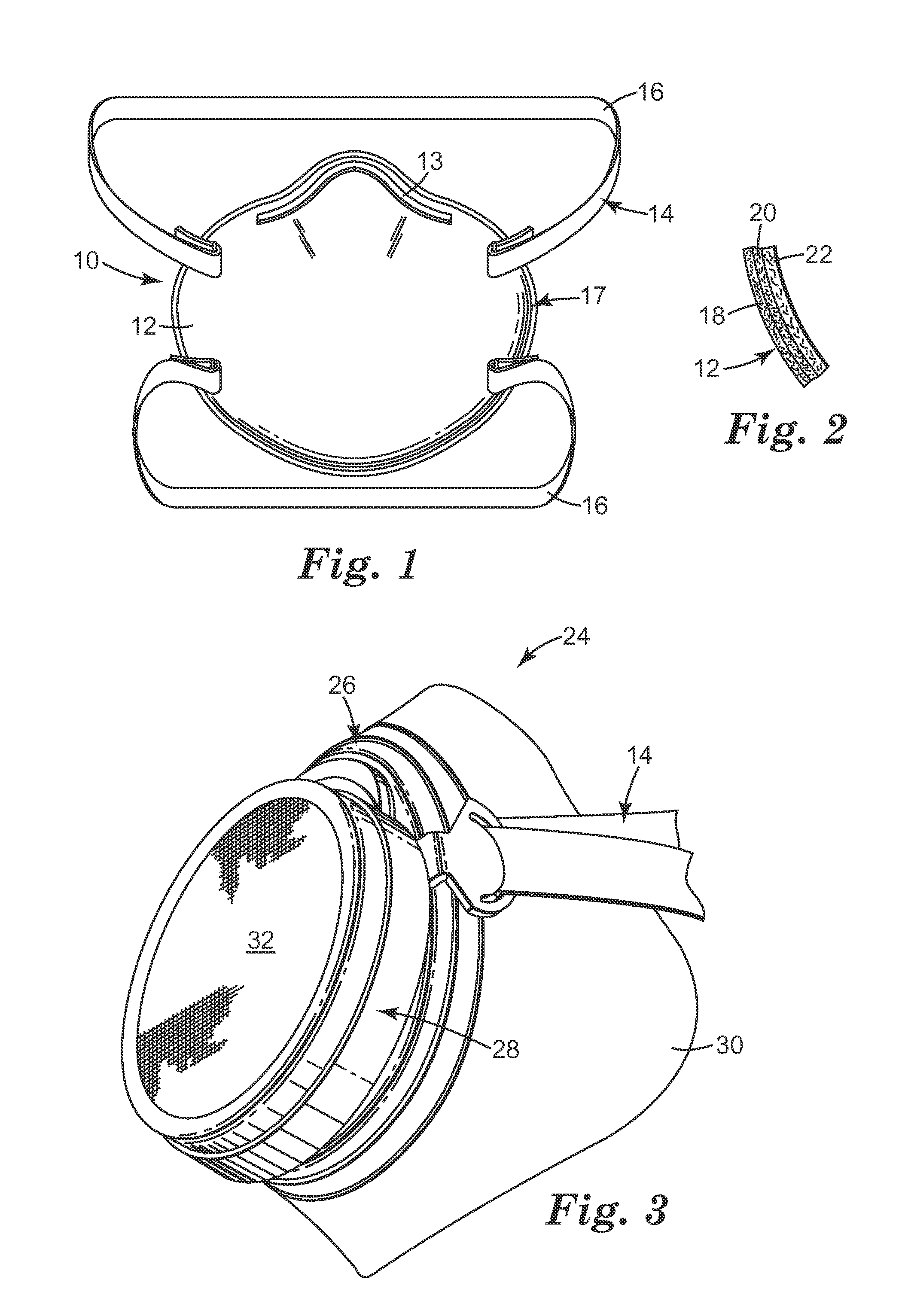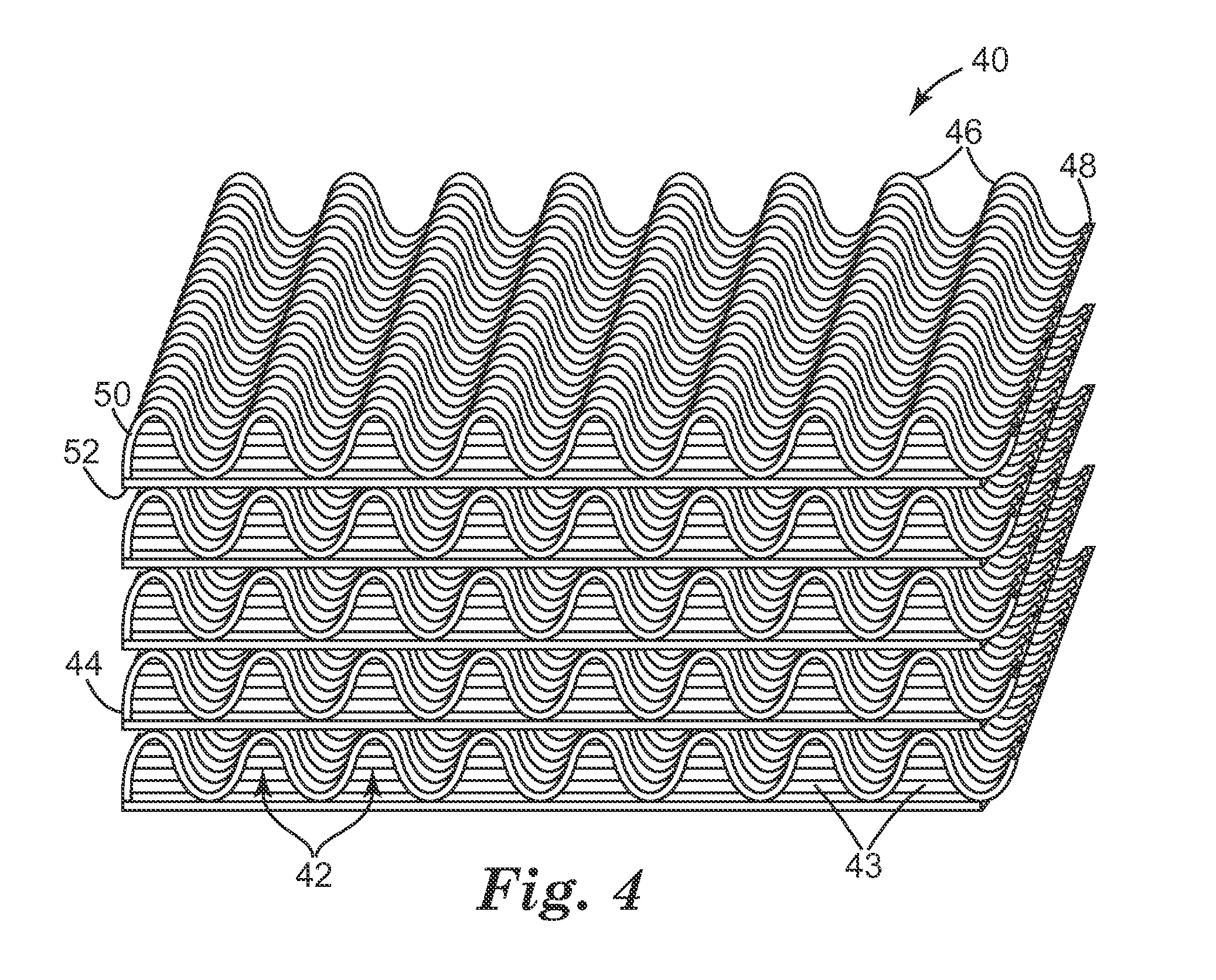Antimicrobial electret web
a technology of electret and antimicrobial, applied in the field of antimicrobial electret web, can solve the problems of compromise of electret properties, and achieve the effect of discharging electrostatic charge and deactivating antimicrobial efficacy
- Summary
- Abstract
- Description
- Claims
- Application Information
AI Technical Summary
Benefits of technology
Problems solved by technology
Method used
Image
Examples
examples
Meltblown Extrusion Process:
[0090]For each Example, a polypropylene blown microfiber (BMF) nonwoven web was prepared from polypropylene resin from TOTAL PETROCHEMICALS under the trade designation “PP3960”. The resin was extruded as described in Van A. Wente, Superfine Thermoplastic Fibers, 48 Indust. Engn. Chem., 1342-46 and Naval Research Laboratory Report 111437 (Apr. 15, 1954). The extrusion temperature ranged from about 250° C.-300° C. and the extruder was a BRABENDER conical twin-screw extruder (commercially available from Brabender Instruments, Inc.) operating at a rate of about 2.5 to 3 kg / hr (5-7 lb / hr). The die was 25.4 cm (10 in) wide with 10 holes per centimeter (25 holes per inch). The (BMF) webs formed had basis weights of about 50-60 g / m2, effective fiber diameters of about 6.5-9.5 micrometers, and thicknesses of about 0.75-2 millimeters. In some examples a charging additive was dry blended with the polypropylene pellets prior to extrusion. The charging additives are d...
example set # 1
Example Set #1
Ag(II)O Antimicrobial Surface Treatment of Electret Filter Media
Example Preparation:
[0110]Several 6 inch×8 inch pieces of the polypropylene melt blown microfiber nonwoven (BMF) web were cut and treated with Antimicrobial Treatment Solution #1 using Treatment Method #1 with the piezo-printer (XY Printer with Xaar XJ-128) as previously described. The Ag(II)O antimicrobial concentration of the dried web was 0.04 mg / cm2.
[0111]The nonwoven webs were first charged by Charge Method #2 then by Charge Method #3 after antimicrobial treatment to form an antimicrobial electret filter.
[0112]The nonwoven webs were then tested for filtration performance as described above, and the results are reported in Table 1. For antimicrobial efficacy the webs were tested using P. aeruginosa. For each sample, there were two sets of duplicates or four total samples. An average was taken of these four samples and is reported in Table 1.
TABLE 1Filtration and antimicrobial performance for Ag(II)O tr...
example set # 2
Example Set #2
Ag2SO4 Antimicrobial Treatment of Electret Filter Media
[0114]Two polypropylene melt blown microfiber nonwoven (BMF) webs were prepared as described above using PP3960 resin from TOTAL PETROCHEMICALS. Each web contained 1 wt % of either Uvinul T-150 or TSM as a charging additive.
[0115]Several 8 inch×36 inch pieces of each BMF web were cut and treated with Antimicrobial Treatment Solution #2 (Ag2SO4) via Treatment Method #2. The webs containing Uvinul T-150 were charged by the Charging Method #2 (corona charging) followed by Charging Method #1 (hydrocharging) either before or after antimicrobial treatment whereas the webs containing TSM were charged by Charging Method #1 (hydrocharging) either before or after antimicrobial treatment to form antimicrobial electret filters. The charge additive and processing sequence of antimicrobial treatment and hydrocharging is described in Tables 2A and 2B. The Ag2SO4 concentration of the dried web was 0.06 mg / cm2.
[0116]For each sequen...
PUM
| Property | Measurement | Unit |
|---|---|---|
| face velocity | aaaaa | aaaaa |
| effective diameter | aaaaa | aaaaa |
| diameter | aaaaa | aaaaa |
Abstract
Description
Claims
Application Information
 Login to View More
Login to View More - R&D
- Intellectual Property
- Life Sciences
- Materials
- Tech Scout
- Unparalleled Data Quality
- Higher Quality Content
- 60% Fewer Hallucinations
Browse by: Latest US Patents, China's latest patents, Technical Efficacy Thesaurus, Application Domain, Technology Topic, Popular Technical Reports.
© 2025 PatSnap. All rights reserved.Legal|Privacy policy|Modern Slavery Act Transparency Statement|Sitemap|About US| Contact US: help@patsnap.com



